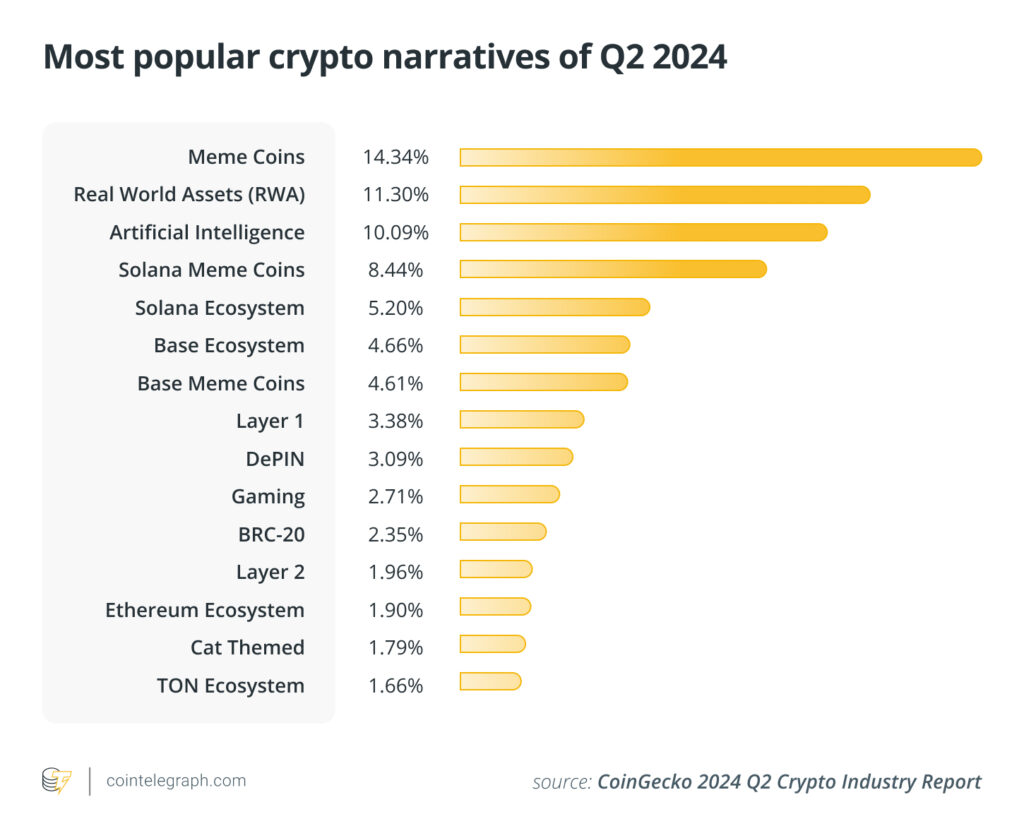Whether executing algorithmic trades of memecoins or racking up transactions in anticipation of airdrops, bots are everywhere in crypto today.
These automated programs operate with speed and precision far beyond human capability, tirelessly performing their programmed functions 24/7.
However, the benefits these crypto bots bring for their owners come at the expense of genuine traders and blockchain users. Their inhuman speed and accuracy create significant disparities in the market, leading to an uneven playing field.
Magazine has even observed crypto bots that create and launch new memecoins on Solana while automatically pulling liquidity from older coins to rug users.
How crypto bots manipulate memecoin markets and airdrops
Rampant bot activity also causes severe congestion on blockchain networks, resulting in higher transaction fees and slower processing times.
Solana, which overtook Ethereum in fee revenue this week, experienced firsthand how bot activities degrade genuine user experience during this year’s memecoin craze.
The blockchain experienced severe congestion issues, with as many as 75% of transactions failing.
“These thousands of meme tokens launched on Solana. It’s all automated, and it’s 100% impacting people,” Ganesh Swami, CEO of data infrastructure firm Covalent, tells Magazine.
“Forget the economic value here — [the network] just becomes unusable.”
The situation worsened to the point that Solana developers had to release an update in April to address the congestion.
Though recent trends have brought Solana to the spotlight, the problems caused by bots aren’t unique to the network. It is a widespread issue affecting any profitable crypto trend.
The rise of MEV: Crypto bots extracting billions from Ethereum transactions
A popular use of bots is for maximal extractable value, or MEV — also known as the “invisible tax.”
On blockchains such as Ethereum, transactions are not processed chronologically — instead, validators prioritize orders with higher transaction fees. So, when a good profit opportunity is highlighted in the transaction queue, validators can insert their own transactions to get in first on the trade, or add transactions before and after large orders to profit from expected price changes. This additional profit is an example of MEV.
Sieving through all the transactions in the mempool (the waiting line for transactions before they hit the blockchain) can be a tall order. This is where crypto bots step in to automate the scanning for MEV opportunities.
That’s not to say that bots are the evil fruits of the industry that solely exist to profit their operators while stealing value from real users.
Trading in today’s digitized economy can be competitive, and profitability can be determined by split-second executions.
Market makers, an essential part of the crypto industry that ensures orders go through and maintains accurate prices for assets, also rely on bots to implement algorithms to ensure pricing is maintained and liquidity is provided across different markets.
“We are talking about optimization of microseconds, which obviously is not possible by humans,” Mathias Beke, co-founder of market-making firm Kairon Labs, tells Magazine.
“So, without automatization, our business would not be scalable at all.”
Beke estimates that without bots, his business would need to hire about 200 more people to properly operate as a market maker.
“In high-frequency trading, the bot becomes such a main piece that it needs to be maintained by 20 to 30 people in order to run what we want it to run,” he says.
“Bots and trading algorithms are used 99% of the time on our end.”
Solana’s memecoin craze: Crypto bot-driven launches and rug pulls explained
Solana’s memecoin craze is ongoing, even if it has cooled from its peak in the early half of 2024.
In the week leading up to July 19, approximately 2,600 new Solana memecoins with liquidity were launched, a drop from 19,000 new tokens launched in a week observed by Magazine back in February.
Rampant bot activity continues to fuel the memecoin scene on the network, with some automation features enabling users to launch tokens on platforms like Pump.fun and inorganically inflate trading volumes by creating and automating trading on multiple wallets.
Magazine found a sample wallet on the Solana blockchain that holds over 3,500 different tokens, mostly memecoins.
Bots can automate memecoin launches by scanning trends, but they often skip important steps, such as deploying smart contracts properly or conducting audits, says Big_Cat, product chief of Solana-based memecoin project Laika.
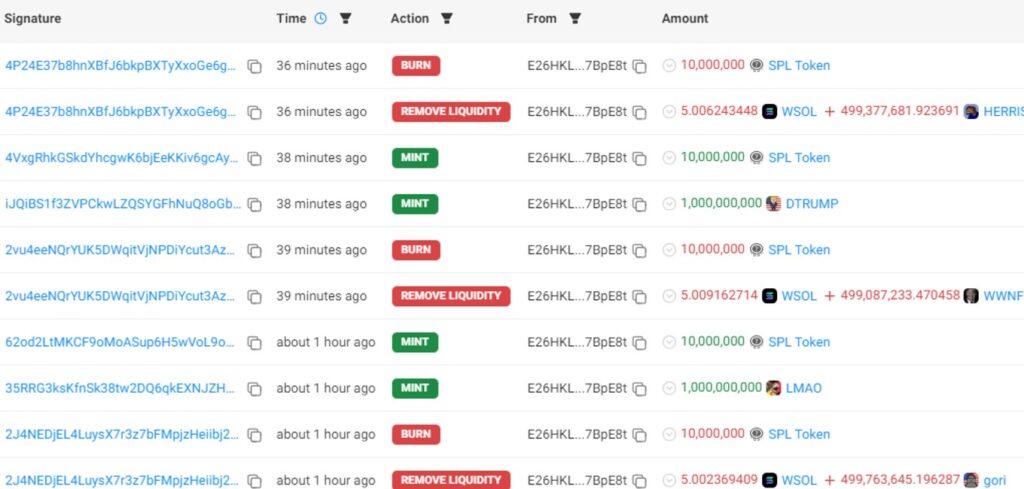
“When used to launch memecoins without proper checks like audits, it can lead to unethical practices and risks, tarnishing the industry’s reputation,” he tells Magazine.
Blockchain records of the sample wallet’s DeFi activities show that it’s creating new tokens at an alarming rate. Simultaneously, it removes the liquidity of the other tokens it has minted, an activity widely viewed as a sign of a rug-pull scam.
This sample wallet’s repeated liquidity removals and rapid token minting activities do not resemble legitimate token projects.
But again, there are legitimate bots that play a crucial role in managing liquidity and that can demonstrate a project is taking its product seriously.
“As for Laika, we’ve successfully launched an initial presale using a Telegram bot integrated with BNB Chain, so the users who are not familiar with Web3 wallets could easily join the project at an early stage.”
Sandwich attacks and front running: How MEV bots exploit traders
In the two years leading up to Ethereum’s Merge in September 2022, the network recorded $675.6 million in extracted MEV, according to data from Flashbots, an MEV research group.
That value has shot up dramatically since.
Post-Merge, 526,207 ETH — about $1.78 billion — in MEV was extracted.
Some argue that MEV is now a natural part of blockchain operations, as they capitalize on the transparency and accessibility of mempool data to identify and execute profitable transactions. Others argue that MEV is widescale illegitimate theft by network operators.
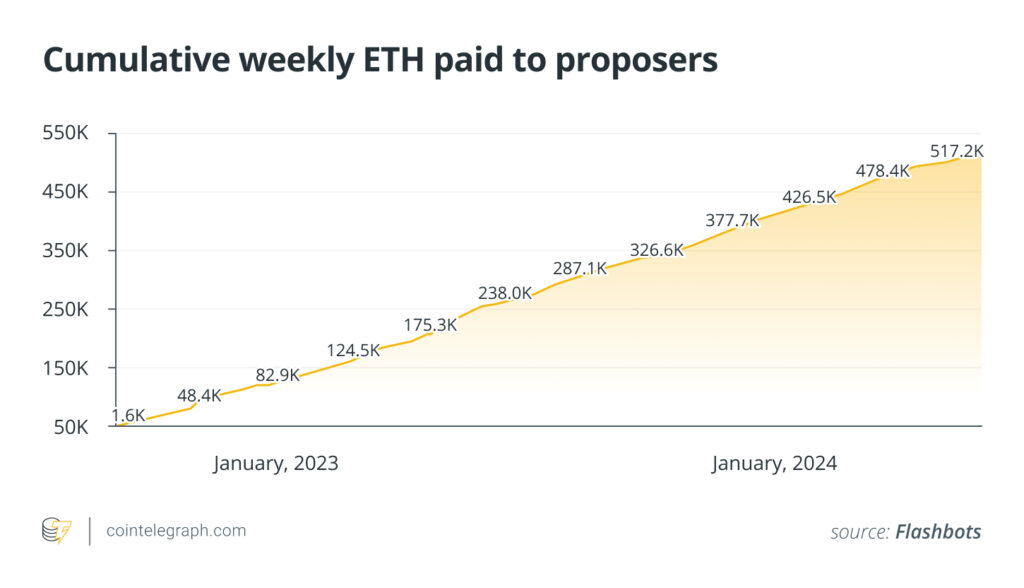
MEV can cause harm by posing challenges to fair market operations and inflation of transaction fees.
Certain MEV applications, like sandwich attacks, directly harm users placing large transactions.
Sandwich attacks occur when an MEV bot spots a transaction in the mempool, like a large buy order, that can impact the price of an asset.
When that transaction is selected to be processed on the blockchain, the attacker places an order of their own right before the victim’s transaction to benefit from the anticipated price increase.
Then, right after the target transaction, another transaction is placed, but this time, the attacker sells the asset at a higher price.
By front-running and back-running large transactions, the attacker profits from the price difference.
The victim of a sandwich attack could lose money due to higher transaction fees or even slippage.
Some networks have taken measures to mitigate sandwich attacks.
In June, the Solana Foundation kicked out a group of validators from its delegation program for their alleged involvement in sandwich attacks.
In early 2022, the MultiverseX blockchain introduced deterministic and random sorting of transactions, which was followed by a drop in observed bot activities and sandwich attacks.
“In late 2021, we saw a lot of bot activity and a lot of sandwiching,” Robert Sasu, a MultiverseX core developer, tells Magazine.
MultiverseX also limits bot activities by charging 0.5 ELGD (about $18) to launch tokens on its network. This fee isn’t explicitly designed to address bot activity, though Sasu sees it as a side effect of the network’s architecture.
Crypto bots and Sybil farming are ruining airdrops for users and projects
In recent years, airdrops have been the most reliable token launch method for projects that want to avoid a lawsuit from the Securities and Exchange Commission or other regulatory agencies.
The concept retroactively rewards users with freshly minted tokens for performing certain tasks before launch. This incentivizes users to send out armies of bots to perform those tasks across a range of different addresses controlled by the bot operator.
Some of the largest airdrops this year faced heavy backlash, as they are believed to have (perhaps inadvertently) prioritized Sybil and bot behavior over human participants.
More recent airdrops have specifically placed barriers to limit airdrop farming bots and Sybil operators.
But they haven’t been perfect.
“Industrial [airdrop] farming has only geared up in the last 12 months or so, and this is purely because of the economic value of a lot of these bot farming activities,” Swami says.
“This leads to this contorted market participation when you don’t have the opportunities, and if anything opens up for investors to participate in something in hopes of profits, you’re just swarmed with bots and industrial farmers.”
In June, LayerZero, an interblockchain messaging and interoperability project, announced its token allocation plans, which included airdrops to 1.28 million wallets out of the 6 million total.
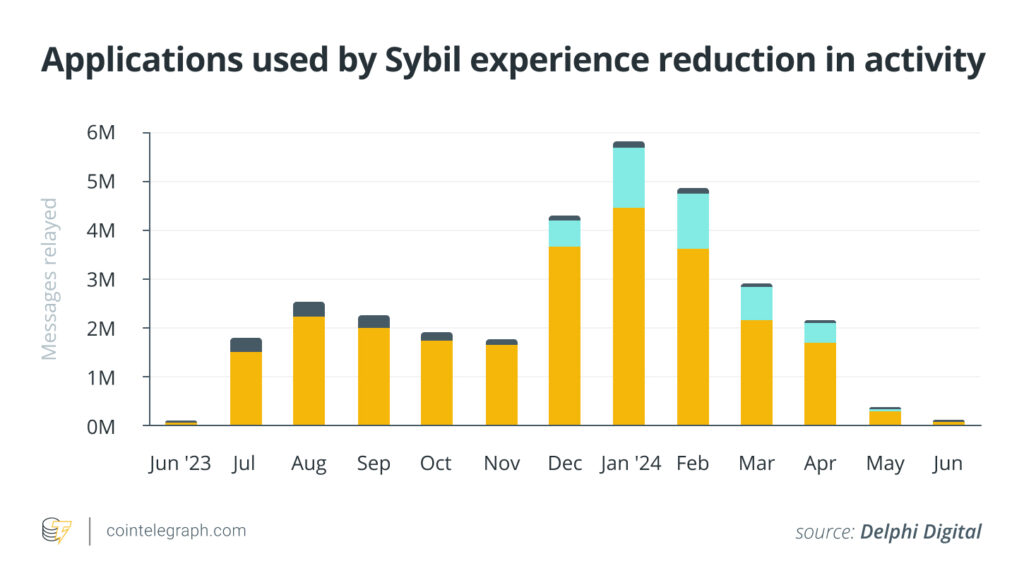
The ones left out, about 78% of addresses, were ineligible because they didn’t meet the criteria or were identified as Sybil, according to a recent Delphi Digital report. Some users complained that they got caught in the crossfire.
Still, many Sybil wallets bypassed the filtration and collected their share of rewards.
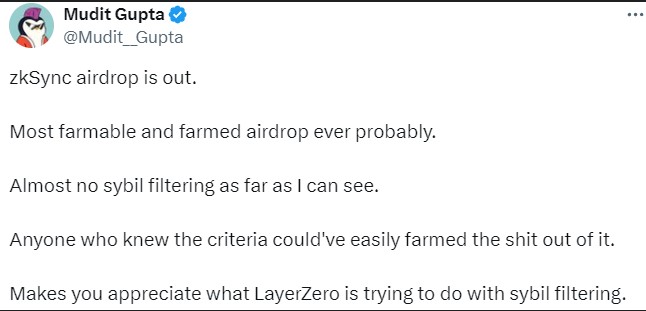
One week after announcing the snapshot for the airdrop, activity across the largest DApps had dropped significantly, with at least 70% week-over-week declines, the report found.
Meanwhile, ZKsync, which recently went live, was heavily criticized by industry watchers for lacking anti-Sybil measures, leading to unfair distributions.
Beware of trying to buy your own bot
Retail traders who try to get in on the bot action can sometimes be defrauded, however. The Commodity Futures and Trading Commission has warned that automated trading bots laced with buzzwords like “artificial intelligence” are sometimes scams that defraud investors with false claims and exaggerated promises.
Beke echoes the warning, especially for those services promising unrealistic returns, like “turning your $1,000 into $2,000 in a week.”
“That’s not how trading works,” he says.
“Maybe there are a few solutions that are doing this properly — and hats off to them — but 99% of these shops are not worth it, and it’s too big of a risk.”

The future of crypto: Balancing bots with fair market practices
Meanwhile, some of this year’s most profitable trends may be setting on the industry, Sasu of MultiverseX says.
“Right now, airdrops are going down. I think that was the craze more at the start of the year. But since then, a lot of those airdrops were taken over by bots,” he says.
“Projects, especially the big ones, are paying a lot of money for onchain analysts to flag Sybils to eliminate people from bots farming airdrops.”
Airdrops have arguably become harmful to ecosystems, Delphi Digital said in its report. After the snapshot date or the token launch, the airdrops analyzed by Delphi Digital saw their activities drop dramatically, suggesting that the campaign was flooded with bots and inorganic farmers.
In contrast, experts tell Magazine that MEV is expected to continue its prominence, though Swami adds that their continued rise could erode trust in the crypto market.
week.

The post 5 ways crypto bots are ruining crypto — including auto memecoin rug pulls appeared first on Cointelegraph Magazine.
